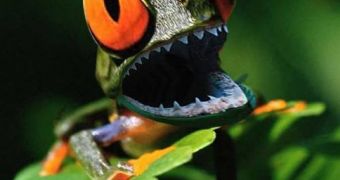Global warming hits hard on the amphibian species: a previously unknown fungal infection is decimating populations across the globe, with an extreme virulence in tropical America and Australia.
Now a research points out that bacteria occurring naturally on the skin of some salamanders can slow down the deadly fungal disease.
The researchers bathed red-backed salamanders, a species vulnerable to the disease, in two different bacterial strains. Those treated with the bacterium Pedobacter cryoconitis were effective in fighting off the deadly fungus, while the Pseudomonas reactans bacterium did slow the fungus, but was less effective.
Maybe one day, biologists could use the bacteria to protect some dwindling amphibian populations threatened by the chytrid fungus.
The fungus is the main threat for amphibian populations, besides habitat destruction and climate change.
The team led by Reid Harris, of James Madison University in Harrisonburg, Virginia, had previously showed that 8 different bacterial strains encountered in the skin secretions of two salamander species stopped the growth of chytrid fungus in lab. Now, at least one bacteria species stops the fungus when present in greater concentrations than in nature. "Many amphibian populations may naturally possess some anti-chytrid bacteria, but not enough to keep the disease at bay.", said Harris.
The same team found that northern populations of the mountain yellow-legged frog in California were more resistant to chytrid infection than southern populations were, which nearly vanished on the arrival of the fungus. "In the frog populations that co-exist with chytrid, there are more animals with at least one species of anti-chytrid bacteria living on their skin. One option is capturing amphibians at ponds and bathing them with anti-fungal bacteria. The concept would be to build a 'fire line' to stop the epidemic spread of the pathogen," said Harris.
Some frogs have been found to posses a rare ability to synthesize some chemicals that are effective against the chytrid. "Bacterial defenses may be particularly vital for amphibians that care for their eggs," Harris said.
The team discovered the anti-chytrid strains while investigating how bacteria boost protection for the amphibian eggs against another fungal disease - th mold. The team is now looking for more protective bacterial strains, in amphibian species that resisted the chytrid.
Still, Harris warns that the fungal diseases could have been triggered by man-made factors. "Amphibians may have become more susceptible to the disease because their protective bacteria may have been damaged by global warming or pesticide contamination. If so, applications of beneficial skin bacteria may not be a long-term solution until underlying factors are addressed.", added Harris.

 14 DAY TRIAL //
14 DAY TRIAL //